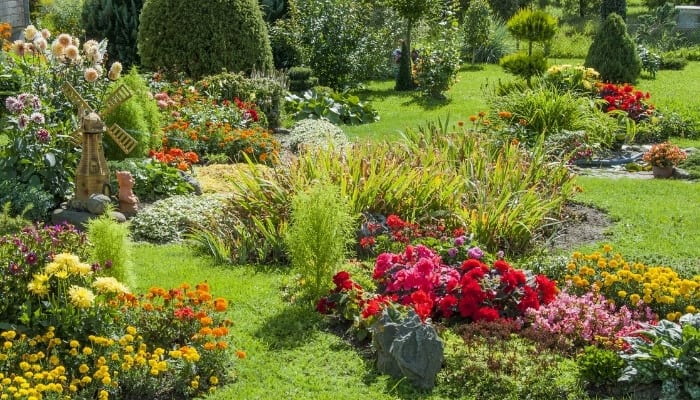Zone 5 denotes the type of plant hardiness zone, determined by the typical winter temperatures of a location.
Zone 5 plants will survive in a minimum temperature of -20 degrees Fahrenheit.
This zone runs through parts of New England, the Midwest, and around the Rocky Mountains (among other areas).

It is important to choose plants that grow well in Zone 5 when planning your garden.
This will not only make caring for them easier, but it will prevent the dreaded loss of plants when it gets too hot or too cold.
Best Perennial Plants for Growing in Zone 5
Perennial plants will die back in the fall and winter but re-emerge from their root stock in the spring. With proper care, these plants will live for many years.
Allium

Alliums grow from bulbs and are related to onions and garlic. By planting in the fall, the allium will produce roots before the ground freezes.
Come spring, the plant needs infrequent watering and minimal fertilization.
- When To Plant: Plant bulbs in fall
- Size: 1-4 feet tall
- Flowering: Round groups of pink, purple, yellow, white, or green flowers
- Light Requirements: Full sun
Bleeding Hearts

Bleeding hearts have fern-like, herbaceous leaves that surround the eye-catching flowers. This plant blooms in the late spring and dies back during the hottest months.
- When To Plant: Transplant seedlings after last chance of frost
- Size: 16-24 inches tall
- Flowering: Pink, red, white, or purple heart-shaped flowers
- Light Requirements: Filtered/partial sunlight
Coneflower
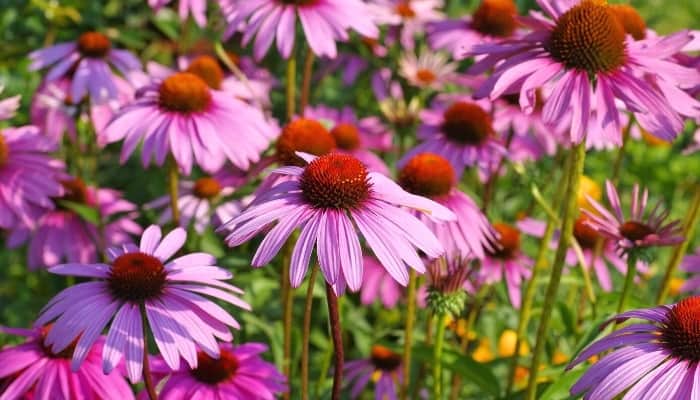
Also known as Echinacea, coneflowers have been used medicinally by Native Americans for hundreds of years.
These beautiful blooms prefer cold soil to germinate and then full sun to grow in.
- When To Plant: When the ground thaws in spring
- Size: 12-34 inches tall
- Flowering: Purple-pink blooms
- Light Requirements: Full sun
Crocus
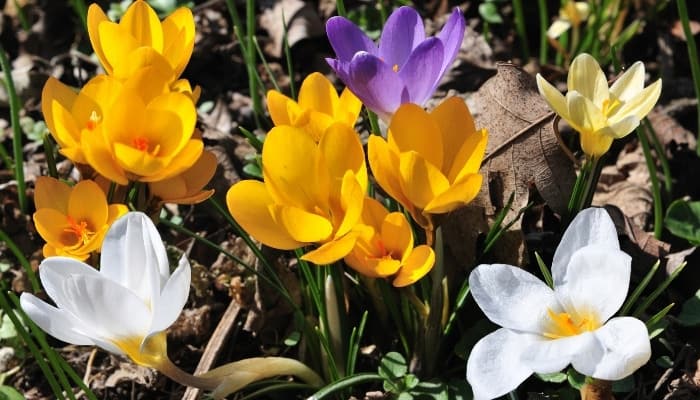
Crocus is another genus of flowering plants that grow from corms. These cold-hardy plants look great in a garden or randomly dispersed throughout a lawn.
- When To Plant: 6-8 weeks before first hard frost, soil temperature below 60℉
- Size: 3-6 inches tall
- Flowering: Flowers range in color from white to yellow to pink to purple
- Light Requirements: Full sun or partial shade
Daffodils
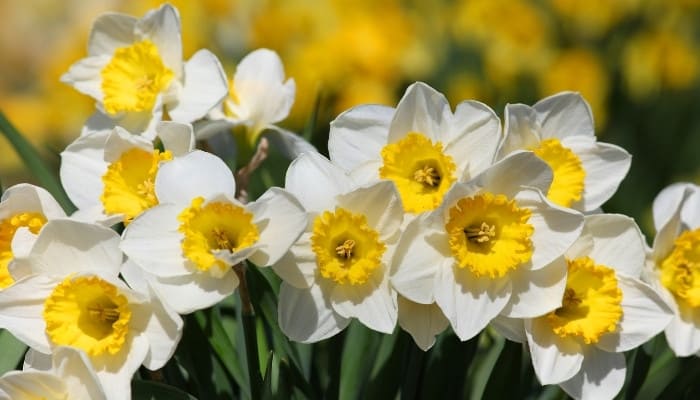
Daffodils are a well-known flower that adds beauty to any garden. The bulbs are cold hardy and actually produce better flowers thanks to the cold weather.
- When To Plant: Fall (2-4 weeks before first freeze)
- Size: 12-24 inches
- Flowering: Usually yellow or white blooms
- Light Requirements: Full or partial sun
Daylilies
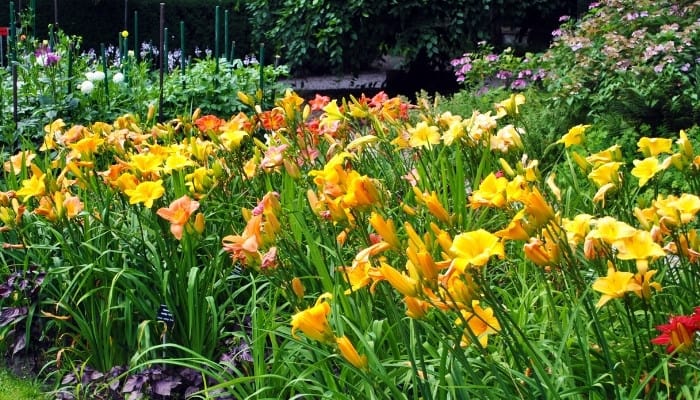
The downside to this beautiful flower is that each bloom only lasts one day. Luckily, daylilies can produce plenty of flowers throughout the season.
- When To Plant: Before the ground is frozen
- Size: 2-4 feet tall
- Flowering: Varieties of sizes and colors, from white to orange to deep purple
- Light Requirements: Full sun
Ferns
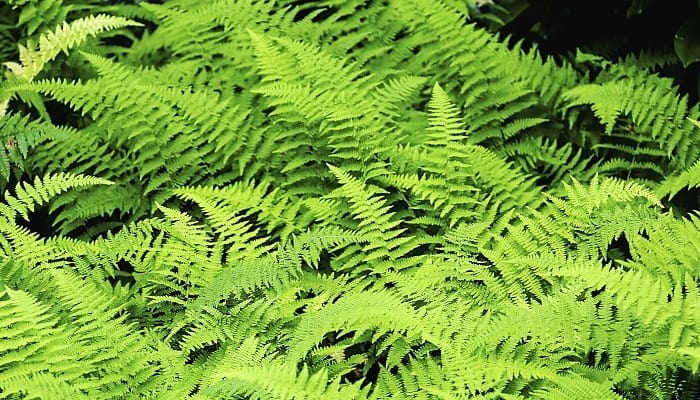
Ferns are unique plants because they reproduce through spores instead of seeds. These plants love moisture, so make sure they receive lots of water.
- When To Plant: Spring
- Size: 6 inches – 6 feet tall
- Flowering: No flowers
- Light Requirements: Shade or filtered light
Hibiscus
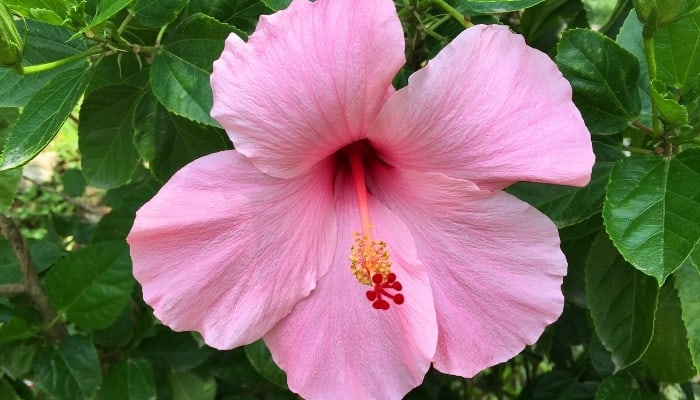
Hibiscus is often thought of as a tropical plant, but certain cultivars are hardy to Zone 4. These plants require lots of water and need wind protection.
- When To Plant: After the last frost
- Size: 2-10 feet tall
- Flowering: Large blooms in a range of colors (white, orange, pink, purple, green)
- Light Requirements: Full sun
Hosta
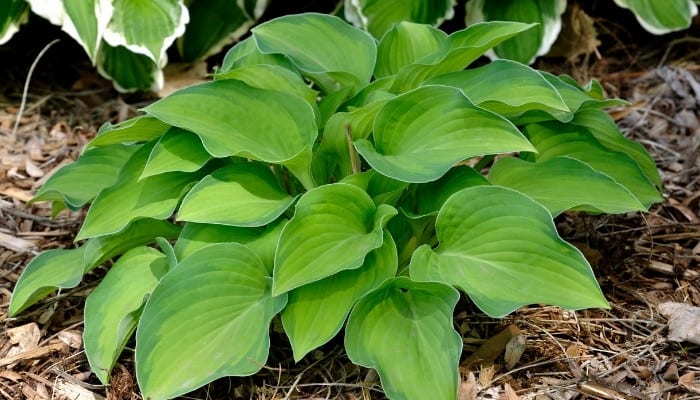
Hostas have a wide range of cultivars, but they are all prized for their large, bright foliage. These plants do well when planted under a tree or along a wall.
- When To Plant: Spring
- Size: Up to 3 feet tall with a 4 foot spread
- Flowering: Tall flower spikes with white, red, yellow, or purple blooms
- Light Requirements: Full sun to full shade (depending on cultivar)
Hyacinth
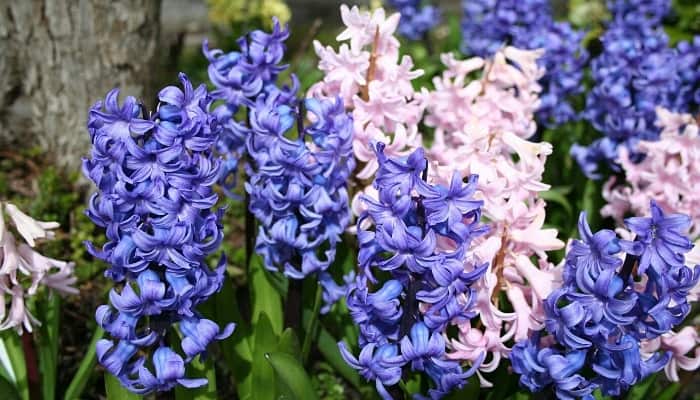
Hyacinths are known for their beautiful, rich-colored flowers. When planted in a large group, hyacinths make a huge statement in the garden, and they smell fantastic too.
- When To Plant: Fall or spring
- Size: 6-12 inches tall
- Flowering: Tall flower spikes with blue, pink, white, or purple blooms
- Light Requirements: Full to partial sun
Iris

There are multiple iris varieties to choose from. Since they all have different blooming windows, you can plant different varieties to have beautiful flowers all spring and summer.
- When To Plant: Fall
- Size: 4 inches – 3 feet tall
- Flowering: Multiple color varieties, blue is most common
- Light Requirements: Full sun
Lilies
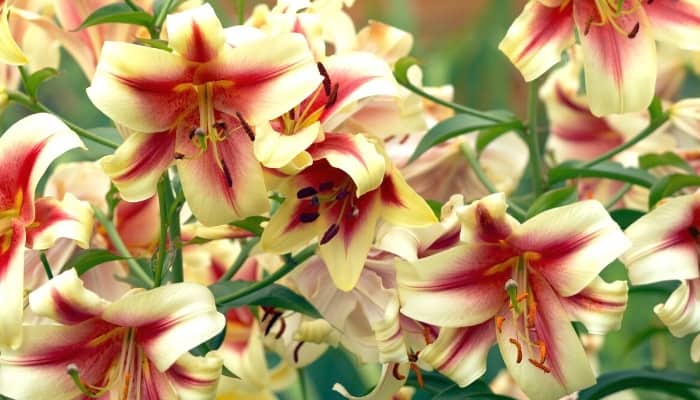
Lilies grow from bulbs and create large, iconic blooms. These plants are healthiest when given a cold dormant period, so they are perfect for Zone 5 gardening.
- When To Plant: Fall or spring
- Size: 2-8 feet tall
- Flowering: Large blooms in a variety of colors (including white, purple, pink, and orange)
- Light Requirements: Full sun or partial shade
Lily of the Valley
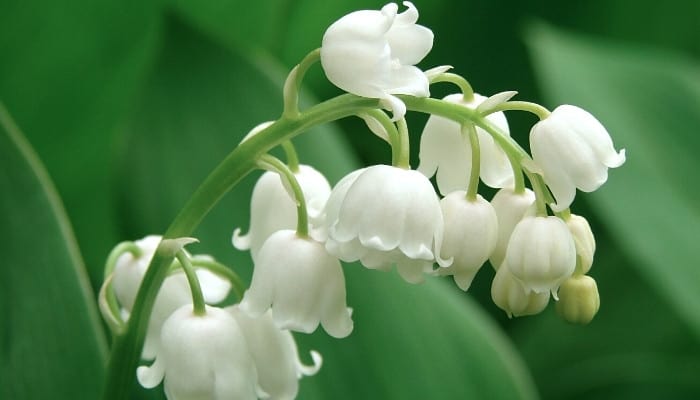
Not only is lily of the valley dainty and beautiful, but the blooms put off an enticing fragrance.
This is one of the few flowering plants that thrives in cold weather and will wilt during the hot summer.
- When To Plant: Fall
- Size: 12-24 inches tall
- Flowering: Lots of small, white bell flowers
- Light Requirements: Partial to full shade
Mums

Mums love the cold weather! The color of the flowers actually gets richer with cold weather.
Some of the specialty varieties are annual plants, but most varieties are perennials in Zone 5.
- When To Plant: Spring (after the last frost)
- Size: 6-48 inches tall
- Flowering: Variety of shapes, sizes, and colors
- Light Requirements: Part or full sun
Peonies
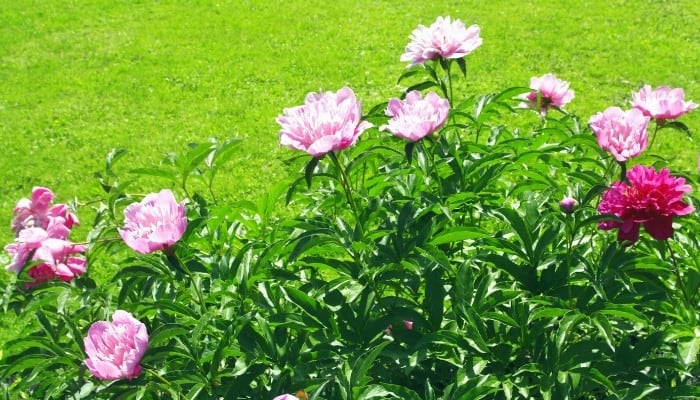
Peonies are a favorite flower for arrangements and bouquets, but the voluminous blooms will also brighten up any garden.
- When To Plant: Spring or fall
- Size: 1-6 feet tall
- Flowering: Large blooms with lots of petals, colors vary from white to pink to purple
- Light Requirements: Full sun
Roses
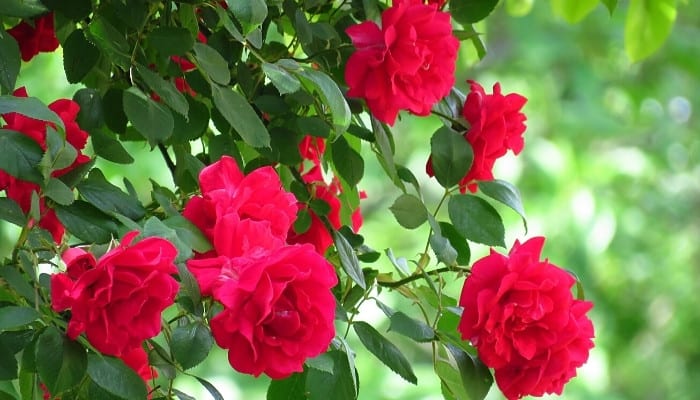
It would be hard to find a flower more well-known than roses. These plants come in a variety of sizes and colors, so there is a cultivar for every garden.
- When To Plant: Fall or spring
- Size: 1-20 feet tall
- Flowering: Small or large blooms in a variety of colors (white, pink, yellow, red, purple, green)
- Light Requirements: Partial shade to full sun
Tulips
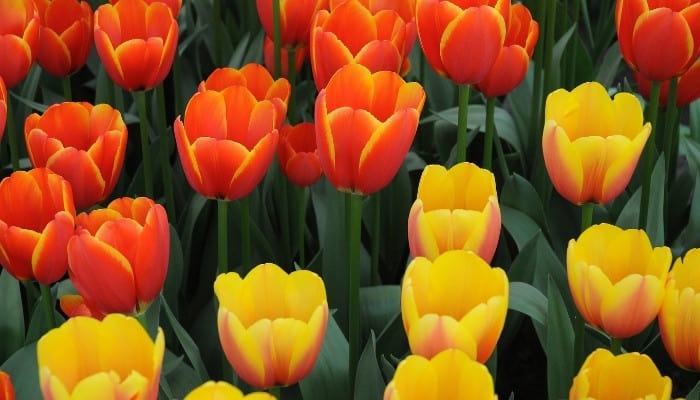
Tulips are a great plant for a Zone 5 garden because they do well with cold winters, offer a variety of floral colors and shapes, and can bloom throughout all of spring.
- When To Plant: Fall (when soil is 40-50℉)
- Size: 6-30 inches tall
- Flowering: Upright cup-shaped blooms in every color (except blue)
- Light Requirements: Full sun
Best Annual Plants for Growing in Zone 5
Annual plants complete their life cycles within a single year and then die. New plants will need to be replanted each year.
A note on bulbs:
Plants that grow from bulbs can technically return year after year.
However, due to the cold temperatures in Zone 5, most gardeners remove some of the bulb species from the ground and replant them each year.
For this reason, we are considering some bulbs to be annual plants.
African Daisy

Also known as the cape marigold, African daisies have broad blooms that come in a variety of colors.
Their papery seeds travel easily and the plants have been known to take over areas when not tended after flowering.
- When To Plant: Spring
- Size: 8-18 inches tall
- Flowering: Variety of colors, from white to gold to red to purple
- Light Requirements: Full sun
Alyssum
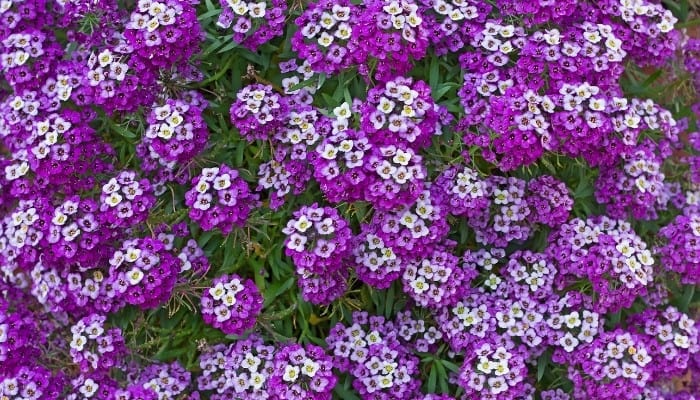
Also known as sweet alyssum for the sweet fragrance it gives off, this plant is the perfect addition to an empty corner in your garden.
Alyssum is slow growing, but it is low maintenance and will easily fill the space with delicate flower clusters.
- When To Plant: Spring, after the last freeze (can handle frost)
- Size: 4-12 inches tall
- Flowering: Small white, pink, or purple flowers
- Light Requirements: Full sun
Begonias

Some gardens feel like begonias have gone out of fashion, but they are a unique addition to the garden. Their leaves have a waxy finish that makes them pop in sunlight.
- When To Plant: Spring (after the risk of frost has passed)
- Size: 6-12 inches tall
- Flowering: White, pink, yellow, or red flowers
- Light Requirements: Full sun
Caladium
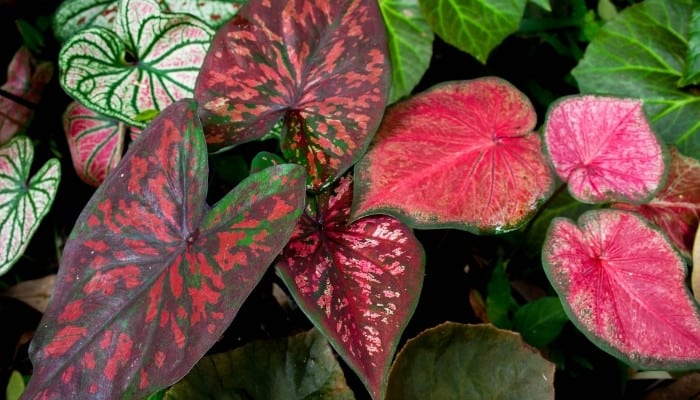
Caladiums are loved for their bright foliage, which usually comes in vibrant pinks and greens. These plants grow from corms, which are bulbous root structures that act similarly to bulbs.
- When To Plant: When soil is at least 70℉
- Size: 12-30 inches tall
- Flowering: Pale green, pink, or white spadix flowers
- Light Requirements: Filtered or partial sunlight
Celosia
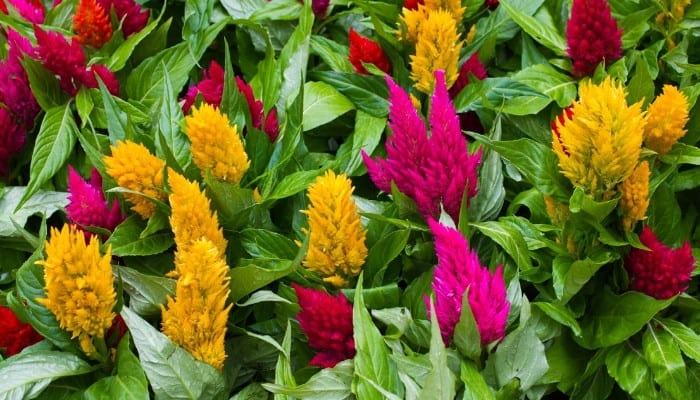
Celosia, also known as cockscomb, produces unique flower clumps that look like colorful fire flames coming up from the plant.
- When To Plant: Spring (after hard frost risk has passed)
- Size: 12-24 inches tall
- Flowering: Tall, pointed bunches of small flowers (yellow, red, purple)
- Light Requirements: Full sun
Cosmos

Cosmos produce small, colorful flowers that look like wildflowers in the garden. Cosmos prefer heat, so they will only do well in the late spring and summer months.
- When To Plant: Spring
- Size: 1-5 feet tall
- Flowering: Small white, orange, pink, or red flowers
- Light Requirements: Full sun
Dahlias

Dahlias look like small fireworks, lighting up the garden. There are plenty of colors, shapes, and sizes of dahlias to choose for your garden.
- When To Plant: Spring (when temperatures are around 55-60℉)
- Size: 12-36 inches tall
- Flowering: Variety of shapes, sizes, and colors
- Light Requirements: Full sun (with afternoon shade)
Dusty Miller

In a sea of green foliage and vibrant flowers, dusty miller sets itself apart with white-silver foliage.
Some gardeners have had success keeping dusty miller as a perennial in zone 5 (though for most, it is an annual plant).
- When To Plant: 2 weeks before the last freeze
- Size: 6-36 inches tall
- Flowering: Small, yellow flowers
- Light Requirements: Partial shade to full sun
Geraniums
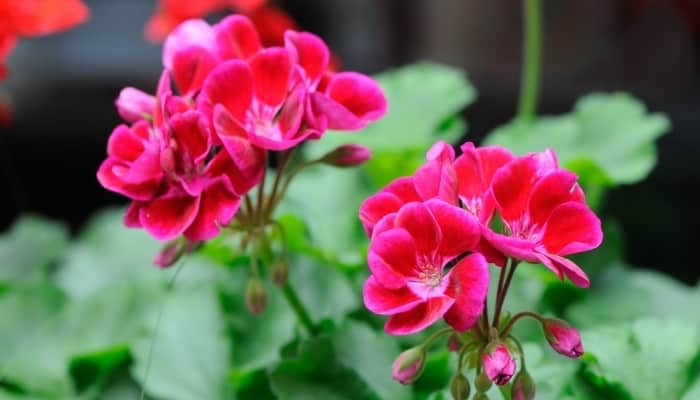
Geraniums are a well-known garden plant that produce banded foliage and simple (but beautiful) flowers.
This low-maintenance plant will produce plenty of gorgeous blooms without needing much from you.
- When To Plant: After risk of frost
- Size: 1-3 feet tall
- Flowering: White and warm-colored flowers
- Light Requirements: Full sun
Gladiolus
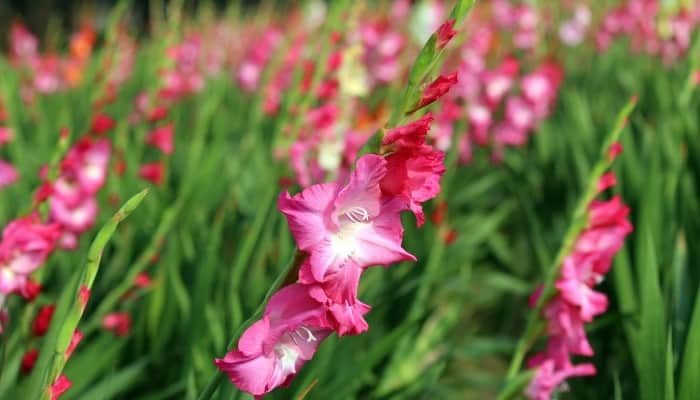
Gladiolus is a perennial plant in zones 7-11, but in zone 5 it can be grown as an annual plant. These showy plants add vertical interest to the garden.
- When To Plant: After the last frost
- Size: 1.5-6 feet tall
- Flowering: Vertical row of flowers along a stem, wide variety of colors
- Light Requirements: Full sun
Lantana
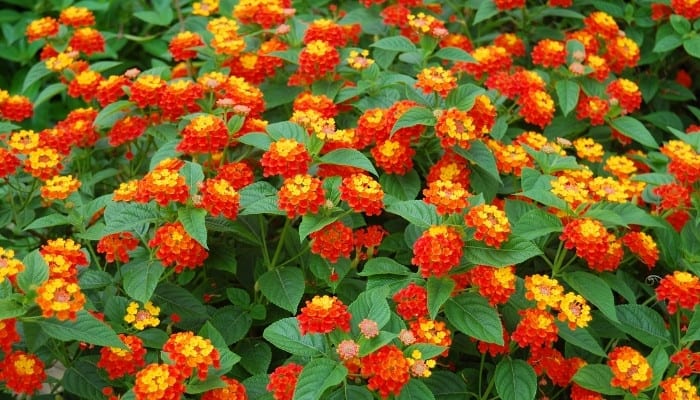
In warmer climates, lantana is considered invasive, but the cold winters make this a great annual plant. Lantana is extremely drought tolerant and enjoys the hot summer.
- When To Plant: Spring, once the soil has warmed up
- Size: 18-36 inches tall
- Flowering: Bunches of small, warm-colored blooms
- Light Requirements: Full sun
Marigolds
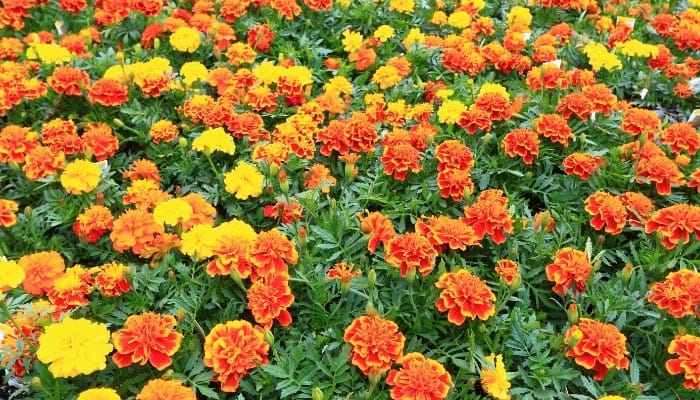
Marigolds are small plants that are full of personality. The bright yellow or orange blooms last for weeks and brighten up the garden throughout the spring and summer.
Marigolds are also a great deterrent to keep pests off edible plants.
- When To Plant: Spring
- Size: 6-24 inches tall
- Flowering: Full blooms that range in color from white to orange
- Light Requirements: Full sun
Nasturtiums
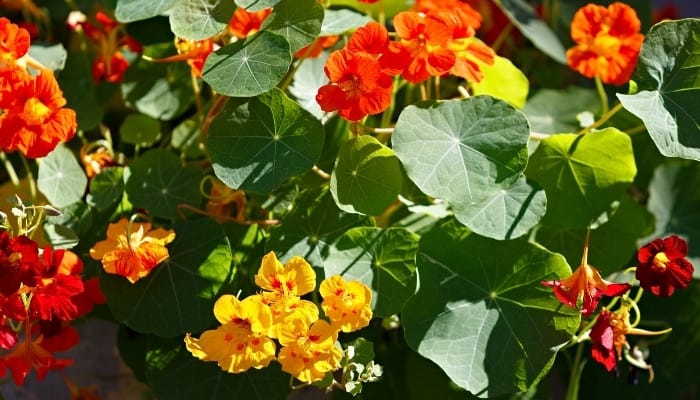
Nasturtiums sport large, round leaves and bright blooms. Some varieties are vining and will grow well on a trellis.
- When To Plant: Spring (once the soil warms)
- Size: 12-18 inches tall
- Flowering: Variety of colors, mostly warm tones
- Light Requirements: Part shade or full sun
Petunia
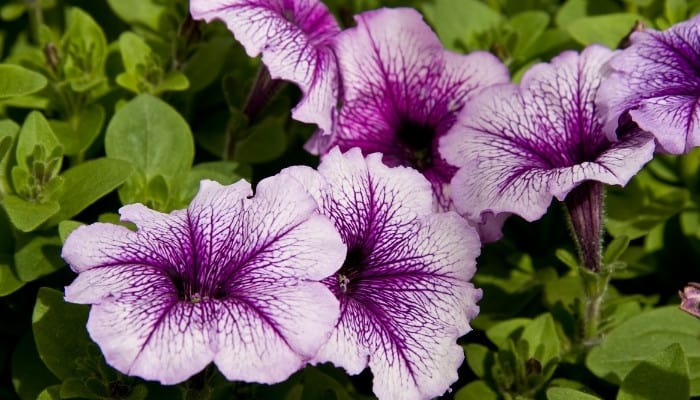
Petunias are a favorite among gardeners because they are low maintenance and put out tons of blooms. Some of the most beautiful varieties have striped petals.
- When To Plant: Spring (when the soil is at least 60℉)
- Size: 10-12 inches tall
- Flowering: Trumpet-shaped blooms in a variety of colors and patterns
- Light Requirements: Full sun
Snapdragon

Children delight in snapdragons as they are the fun flowers that can open their “mouths.” In the garden, the blooms come in a variety of colors and grow on a tall flower stalk.
- When To Plant: Spring
- Size: 8-36 inches tall
- Flowering: Multiple blooms growing vertically on a flower stalk
- Light Requirements: Full sun
Zinnia
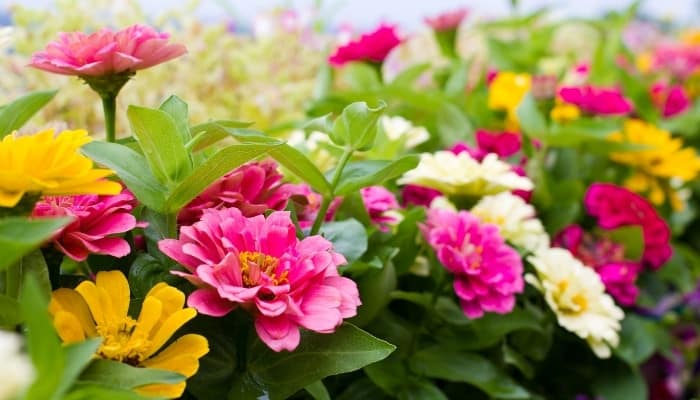
Zinnias are fairly easy to grow annuals that do best when given lots of room to grow.
These plants are prone to fungal infections, so maximize airflow around each plant and avoid overwatering.
- When To Plant: Spring (after the last frost)
- Size: 6-48 inches tall
- Flowering: Broad flowers with lots of petals
- Light Requirements: Full sun
That’s a Wrap!
This comprehensive list of options will allow you to plant a gorgeous Zone 5 garden.
By mixing hardy perennials with low-maintenance annuals, you can enjoy all the beauty with very little work.

